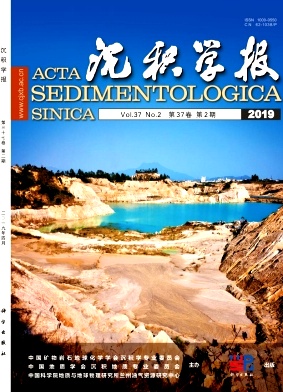Research on Lithofacies Types, Cause Mechanisms and Distribution of a Gravel Braided-River Alluvial Fan: A case study of the modern Poplar River alluvial fan, northwestern Junggar Basin
doi: 10.14027/j.issn.1000-0550.2018.139
- Received Date: 2017-10-25
- Rev Recd Date: 2018-06-05
- Publish Date: 2019-04-10
-
Key words:
- braided-river alluvial fan /
- lithofacies types /
- granularity characteristic /
- lithofacies distribution /
- open-framework conglomerate
Abstract: Conglomerate reservoirs in alluvial fans are an important oil and gas reservoir type in the Junggar Basin. However, alluvial fan glutinite reservoirs consist of several lithofacies and poor continuity, which causes the lithofacies interpretation of the alluvial fan facies to be a fundamental and difficult research area. As an example, the lithofacies mechanism and distribution of the modern Poplar River alluvial fan at the northwestern margin of the Junggar Basin is discussed on the basis of a large amount of outcrop data, source rocks, hydrological data and alluvial fan studies reported in the literature. According to the deposition mechanism, the Poplar River alluvial fan is a braided-river alluvial fan with features typical of its large scale (fan total area is 327.6 km2), gentle slope (about 4‰-7‰), and rough sediments. Sixteen lithofacies were recognized; their hydrodynamic differences indicate that they may be classified into five causes:debris flow, high-flow traction current, low-flow traction current, hydrostatic deposition, and aeolian deposition. Debris flow is mainly composed of flood deposits; high-flow traction current mainly includes sheet-flood deposits and turbulent deposits; low-flow traction current is mainly composed of (gravelly) sand channel sediments; hydrostatic deposits are dominated by fine material, and aeolian deposits mainly consist of wind-transported sediments. The lithofacies are divided into four types according to sedimentary structure, granularity and distribution scale. The first type has an obvious sedimentary structure and wide distribution. The second type has obvious sedimentary structural characteristics but limited distribution. The third type, which is present on a large scale, has characteristics in which the sedimentary structures are not apparent. The sedimentary structure and physical properties of the fourth type are also not apparent, and occur only on a limited scale. The first and second types of lithofacies are mainly caused by traction currents that mainly form in the middle and distal parts of the flood period, and in the middle part of the inter-flood stage; those lithofacies form higher-quality reservoirs underground in due course.
| Citation: | JIN Jun, LIU DaWei, JI YouLiang, YANG Zhao, GAO ChongLong, WANG Jian, DUAN XiaoBing, HUAN ZhiJun, LUO NiNa. Research on Lithofacies Types, Cause Mechanisms and Distribution of a Gravel Braided-River Alluvial Fan: A case study of the modern Poplar River alluvial fan, northwestern Junggar Basin[J]. Acta Sedimentologica Sinica, 2019, 37(2): 254-267. doi: 10.14027/j.issn.1000-0550.2018.139 |






 DownLoad:
DownLoad: